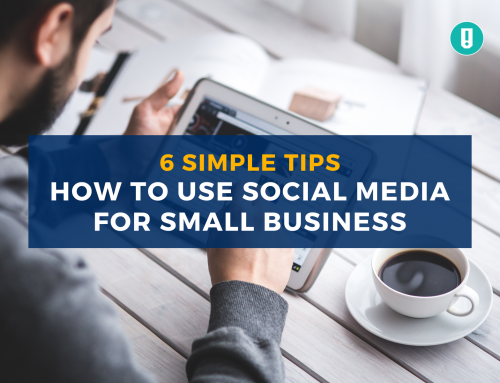Every retailer needs to market its wares: that’s been true since the very beginning. If you set up a stall in a marketplace full of other sellers, shoppers aren’t going to inevitably migrate towards you because they can somehow sense the quality on offer. They’ll wander around unsure where to go or what to look at — and if you want them to pay attention to your stall in particular, you need to do something to grab that attention and retain it long enough to make some sales.
What’s more, the importance of marketing has actually gone up during the internet era. It’s possible to make some brick-and-mortar sales through simply having the right location, but location is immaterial in the digital landscape where all stores are easily accessible from a simple Google search. Getting noticed requires you to be proactive.
But what goes into a good modern-day marketing strategy? There are many key components, but one that you need to secure very early in the process is a strong understanding of your audience. Without that, you’ll struggle. Allow me to explain why.
Insight allows more efficient targeting
Every company that invests in marketing must first allocate a budget. Trying to be promotionally proactive without knowing how much money you have to spend is a fool’s errand: many tactics don’t pay off for quite some time, so you can tear through your savings before you even know that your efforts are going to return significant value. Financial stability is vital.
And when you have a budget defined, you need to use it as efficiently as you can. This requires strong targeting: ensuring that every piece of marketing material you produce goes out to the most relevant people will maximize the results. That isn’t easy, though. How do you narrow things down to the right recipients? Well, you need to understand your audience.
The two most flexible methods for direct-to-shopper marketing are email marketing and running PPC ads through a system like Facebook Ads. When you build a decent mailing list and collect enough data to break it down further, you can — for instance — send a new product promo out to only those recipients who’ve previously expressed interest in similar products.
And when you advertise through Facebook, knowing things about your audience members — how much they earn, where they live, what jobs they work — will allow you to narrow down your ad spread. In short, collecting information about the various traits of your audience members will make it possible to achieve much greater ROI on your outbound marketing campaigns.
People shop in notably-different ways
Though there are some major similarities, we all shop in different ways. Some people will go to Google first (as suggested earlier) when looking for products, so reaching those people will involve a comprehensive SEO strategy and perhaps some Google Ads. Others will instead go to Amazon first (or another big retailer), in which case you’ll need to market your products through third-party storefronts — or find some ways to reach those people ahead of time.
And there are still many people (more than you might think) who don’t start with ecommerce: they might first look for nearby stores to see what they can buy through brick-and-mortar retail. They will buy through ecommerce if that ends up seeming like the best choice, but they won’t default to it — so do you have a plan to reach them? Maybe offline advertising could work.
The better you understand your audience, the more you’ll appreciate that it isn’t a monolith. This will bring a much greater complexity to your strategy and allow you to really dig into what leads each of your prospective customers to buy a particular item from a particular company.
Every customer wants to feel catered to
Don’t we all want to be understood when we’re shopping? Think of the classic VIP experience on offer in high-end stores: getting the undivided attention of a shopping assistant, being handed samples to try, and receiving strong suggestions of products to consider. The more you feel that you’re getting special treatment, the more you’ll feel ready to buy.
Now, while you can’t really provide that VIP experience online, you can introduce elements of personalization to your marketing materials. Your emails can feature dynamic recommendations based on purchase histories, for instance, or special offers on items your customers have bought before (this tactic is great for prompting repeat orders).
You should also think about the importance of social media engagement. Understanding your audience will also help you to choose the right tone and wording for your social media posts, after all — and given how dangerous social media can be to unwary brands, this is extremely important. The more you learn about the people you’re trying to reach, the less likely you’ll be to commit a faux pas, and the more likely you’ll be to win their approval.
Catering to an audience is all about getting them to come on the journey with you. As professional public speaker Pat Quinn discusses on the productivity podcast Get Yourself Optimized, a public speaker knows they’ve found success when they get the audience nodding along with their points, which can be achieved through good performance but largely comes from using language and ideas that resonate with them. Your ad might not get the ‘nod along’ first time round, but by reinforcing an idea through carefully curated content (based on audience research) you can achieve a greater degree of understanding and relatability.
Negative feedback can have a huge impact
It’s not enough to just understand what your audience likes — you need to be hyper-aware of what they dislike.
What online consumers don’t like is generally pretty universal. Bad service, poor web design and a lack of clarity are all major pet peeves of anyone who’s ever tried to shop online. But unique audiences for particular brands and niches will have their own dislikes, and understanding that is a crucial element of crafting a well-received marketing strategy.
Just why is this so important? Because of the power of negative feedback. Bad reviews, comments and social media responses can quickly stink an online brand. Being criticised in the digital public sphere and having your name associated with negative service can be just as harmful as setting out to do something wrong. It shows carelessness in service and sometimes suggests a brand not to be trusted.
All of this (commonly referred to as social proof) is part of a permanently on-going form of marketing. While not strictly a campaign, how your brand is spoken about and interacted with on everything from Facebook to TrustPilot is crucial for finding success and retaining an audience.
Most commonly, this negative feedback comes from a lack of audience understanding and engagement. The basics will work for some businesses, but many need to nail down what’s important to their audience and put it front and centre of their campaign. In the B2B industry and working with more sensitive brands? You better ensure you offer NDAs. Selling to passionate hobbyists? Your products and marketing need to be co-signed with an official sellers seal of approval.
Rodney Laws is an online entrepreneur who has been building online businesses for over a decade. He knows what it’s like to see websites both succeed and fail – even the best business ideas can fall short. Find out how he can help you by visiting EcommercePlatforms.io or heading over to @EcomPlatformsio.







Leave A Comment